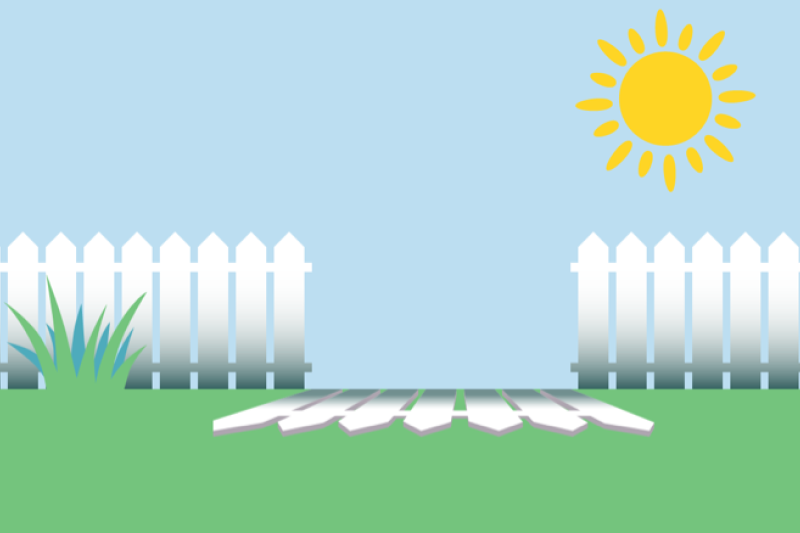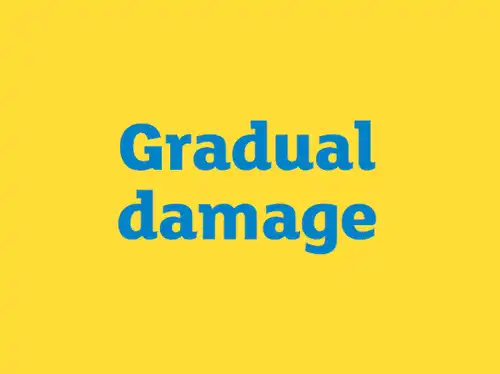
Insurance policies are designed to cover you for sudden, accidental and unforeseen damage or loss. Gradual damage is deterioration that happens over time, like wear and tear. Because the damage isn’t sudden - even if the discovery is - it is generally not covered by insurance. Let’s take a closer look at what is meant by the term ‘gradual damage’.
What is gradual damage?
Gradual damage is deterioration to property caused over time. Some gradual damage is hidden, so it isn’t easy to spot. Sometimes the results of gradual damage may feel sudden, even though the damage has been getting worse over time.
For example, if your wooden fence is blown over in a storm, this could be covered by your insurance as it happened suddenly, but if your wooden fence fell because it has been gradually rotting over time, then this might not be covered by insurance.
Gradual damage may not be covered by your home or contents policies, and includes but is not limited to wear and tear, corrosion, rot and mildew.

Examples of gradual damage
Michael noticed that a puddle of water was regularly forming on the wooden flooring in his bathroom after he used the bath. A few weeks later, he ran a bath and heard a dripping noise in the bathroom, which he thought was coming from the tap. A few weeks after that, he spotted a hairline crack in his bathtub, which was where the water was escaping from. The bath had been leaking for a while, causing the wooden flooring in the bathroom to deteriorate over time, constituting gradual damage. As Michael’s insurance policy excluded gradual damage, he wasn’t covered for the damage.
Another common example of gradual damage is a leaking shower tray. Robert hasn’t renovated the bathroom since he bought his house ten years ago. He uses the shower every day and, one day, he noticed the floor in the bathroom became a bit squishy after his shower. A few weeks later, the paint started peeling off the ceiling in the room below. This is when Robert realised that the sealant around the shower was coming loose, allowing water to seep into the floor and ceiling below. As the damage to the ceiling happened over time, Robert was not covered under his insurance policy due to the gradual damage exclusion.
Sudden damage, if not acted upon, can sometimes lead to gradual damage. Rebecca’s roof was damaged in a storm, but she didn’t notice the damage until water started leaking into the bedroom upstairs, by which point the timber framing of her house was affected by rot. In this case, the storm damage would typically be covered, but the subsequent damage to the framing would be considered gradual damage and, therefore, would not be covered by insurance.
The exception: hidden water damage
Some insurance providers offer a benefit that contributes towards the costs of gradual damage, but it often only applies if the damage was the result of a leaking internal pipe or waste disposal pipe that a homeowner could not have seen. The claim is not normally covered in full and your policy document will state how much you are covered for. This will be paid in the form of a contribution by your insurer towards the total cost of the damage. You will only be covered for this type of gradual damage if certain conditions are met, so it’s important that you read your policy wording thoroughly to understand the details of your cover.
At AA Insurance, our customers are covered for this damage under our ‘Hidden water damage’ benefit. The benefit offers a contribution of up to $2,000 if your home sustains gradual damage from a leaky water pipe forming part of a heating, water reticulation, or plumbing system, a water storage tank or waste disposal unit and if the damage could not have been discovered immediately.
Key takeaways
Gradual damage is a common exclusion in home insurance cover, so it’s important to make sure you are properly maintaining your home or investment property and picking up on tell-tale signs. Keeping your property in good nick is part of the conditions of your insurance, and it really does save you time and money in the long run. If you, your tenants or property manager, notice something broken, a funny smell, the sound of a drip or something unusual like a stain or patch of mould on the ceiling, get it sorted quickly before it causes any further damage.
Any questions?
Now’s a great time to review your insurance. We recommend checking your details are up to date and ensuring the policy and cover you’ve chosen is right for you and your insurance needs.
If you have any questions about your insurance, need to update your AA Insurance policies or would like a quote, don’t hesitate to contact us. You can find our opening hours and ways to get in touch with us on our contact page.
This blog provides general information only and is not intended to be a recommendation or personalised financial advice. Excesses, terms, conditions, limits and exclusions apply to AA Insurance Limited’s policies. Please check the policy wording for details of cover. The provision of cover is subject to the underwriting criteria that apply at the time.



